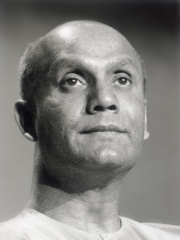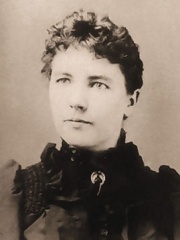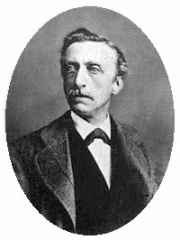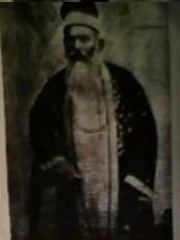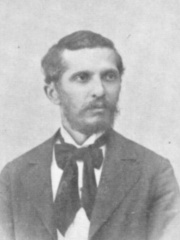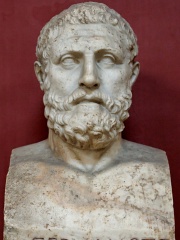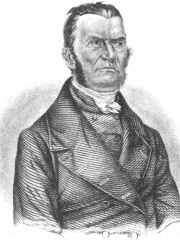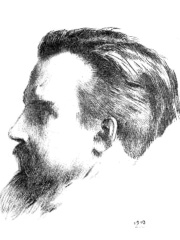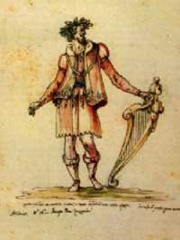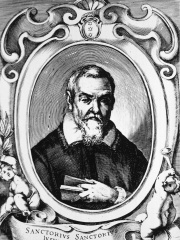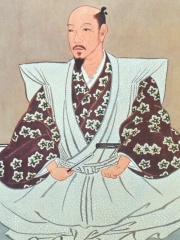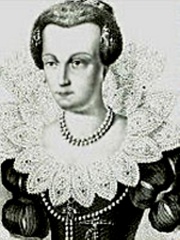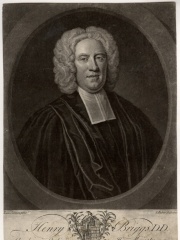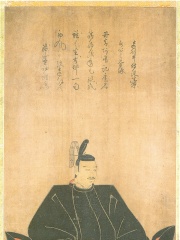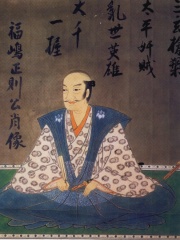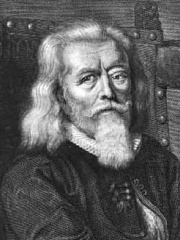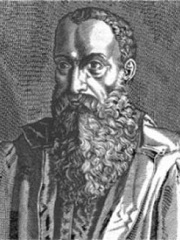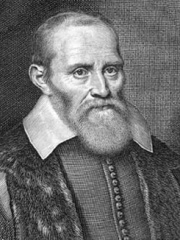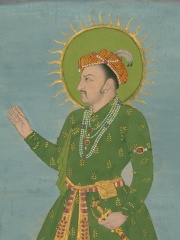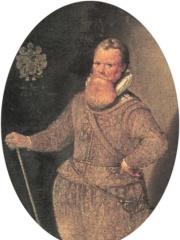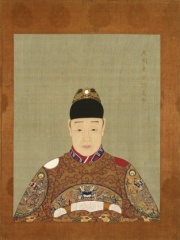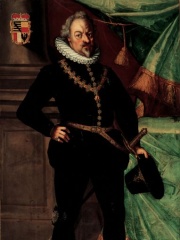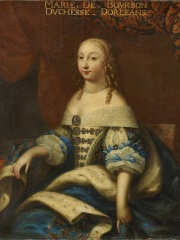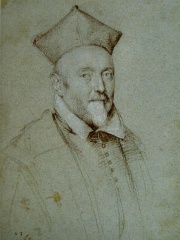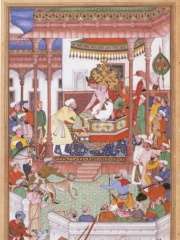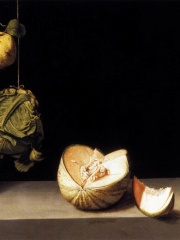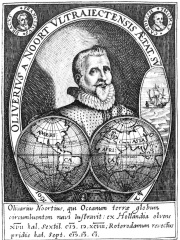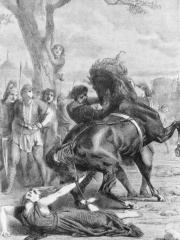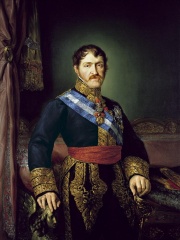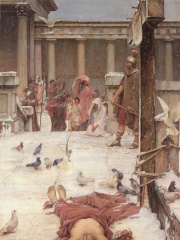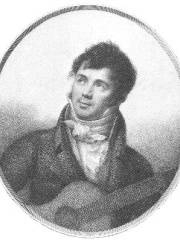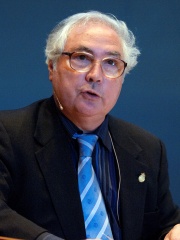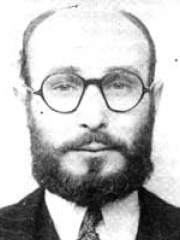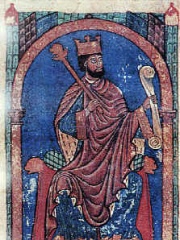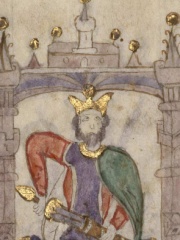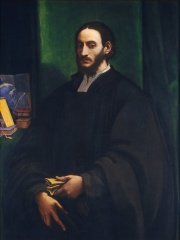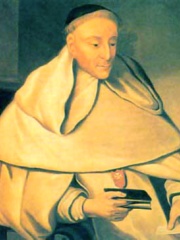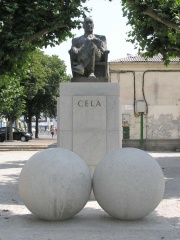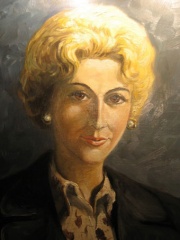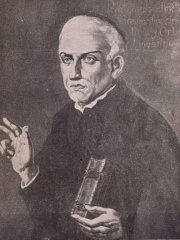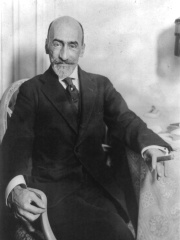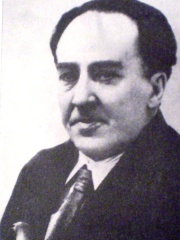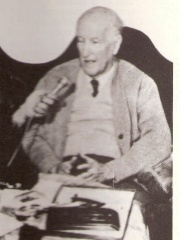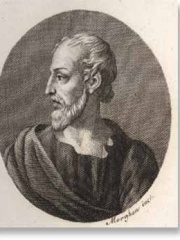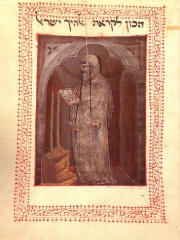WRITER
Luis de Góngora
1561 - 1627
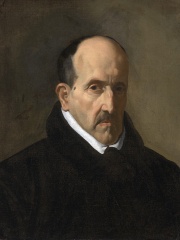
 Luis de Góngora
Luis de Góngora
Luis de Góngora y Argote (born Luis de Argote y Góngora; Spanish: [lwis ðe ˈɣoŋɡoɾa]; 11 July 1561 – 24 May 1627) was a Spanish Baroque lyric poet and a Catholic prebendary for the Church of Córdoba. Góngora and his lifelong rival, Francisco de Quevedo, are widely considered the most prominent Spanish poets of all time. His style is characterized by what was called culteranismo, also known as Gongorismo. Read more on Wikipedia
Since 2007, the English Wikipedia page of Luis de Góngora has received more than 262,460 page views. His biography is available in 52 different languages on Wikipedia (up from 51 in 2019). Luis de Góngora is the 698th most popular writer (down from 681st in 2019), the 216th most popular biography from Spain (down from 207th in 2019) and the 24th most popular Spanish Writer.
Luis de Góngora is most famous for his poetry. His poetry is known for its use of complex metaphors and elaborate wordplay.
Memorability Metrics
260k
Page Views (PV)
64.30
Historical Popularity Index (HPI)
52
Languages Editions (L)
4.04
Effective Languages (L*)
4.88
Coefficient of Variation (CV)
Notable Works
Page views of Luis de Góngoras by language
Over the past year Luis de Góngora has had the most page views in the Spanish wikipedia edition with 210,812 views, followed by English (26,265), and Ukrainian (14,291). In terms of yearly growth of page views the top 3 wikpedia editions are Ido (107.79%), Quechua (91.78%), and Irish (78.55%)
Among WRITERS
Among writers, Luis de Góngora ranks 698 out of 7,302. Before him are Francesca da Rimini, Sri Chinmoy, Laura Ingalls Wilder, Multatuli, Abu al-Ghazi Bahadur, and Naim Frashëri. After him are Periander, Pavel Jozef Šafárik, Andrea Camilleri, Arto Paasilinna, Jack Vance, and Maurice Denis.
Most Popular Writers in Wikipedia
Go to all RankingsFrancesca da Rimini
1259 - 1285
HPI: 64.36
Rank: 692
Sri Chinmoy
1931 - 2007
HPI: 64.36
Rank: 693
Laura Ingalls Wilder
1867 - 1957
HPI: 64.33
Rank: 694
Multatuli
1820 - 1887
HPI: 64.33
Rank: 695
Abu al-Ghazi Bahadur
1603 - 1664
HPI: 64.31
Rank: 696
Naim Frashëri
1846 - 1900
HPI: 64.31
Rank: 697
Luis de Góngora
1561 - 1627
HPI: 64.30
Rank: 698
Periander
700 BC - 583 BC
HPI: 64.28
Rank: 699
Pavel Jozef Šafárik
1795 - 1861
HPI: 64.27
Rank: 700
Andrea Camilleri
1925 - 2019
HPI: 64.27
Rank: 701
Arto Paasilinna
1942 - 2018
HPI: 64.26
Rank: 702
Jack Vance
1916 - 2013
HPI: 64.26
Rank: 703
Maurice Denis
1870 - 1943
HPI: 64.25
Rank: 704
Contemporaries
Among people born in 1561, Luis de Góngora ranks 3. Before him are Francis Bacon, and Jacopo Peri. After him are Santorio Santorio, Katō Kiyomasa, Anna Maria of the Palatinate, Henry Briggs, Ii Naomasa, Fukushima Masanori, Thomas Fincke, Adriaan van Roomen, and Philippe van Lansberge. Among people deceased in 1627, Luis de Góngora ranks 4. Before him are Jahangir, Frederick de Houtman, and Tianqi Emperor. After him are Karl I, Prince of Liechtenstein, Wei Zhongxian, Marie de Bourbon, Duchess of Montpensier, Francesco Maria del Monte, Abdul Rahim Khan-I-Khana, Juan Sánchez Cotán, Princess Cecilia of Sweden, and Olivier van Noort.
Others Born in 1561
Go to all RankingsFrancis Bacon
PHILOSOPHER
1561 - 1626
HPI: 85.99
Rank: 1
Jacopo Peri
COMPOSER
1561 - 1633
HPI: 68.69
Rank: 2
Luis de Góngora
WRITER
1561 - 1627
HPI: 64.30
Rank: 3
Santorio Santorio
PHYSICIAN
1561 - 1636
HPI: 63.34
Rank: 4
Katō Kiyomasa
POLITICIAN
1561 - 1611
HPI: 60.78
Rank: 5
Anna Maria of the Palatinate
COMPANION
1561 - 1589
HPI: 59.68
Rank: 6
Henry Briggs
MATHEMATICIAN
1561 - 1630
HPI: 59.59
Rank: 7
Ii Naomasa
POLITICIAN
1561 - 1602
HPI: 58.32
Rank: 8
Fukushima Masanori
MILITARY PERSONNEL
1561 - 1624
HPI: 55.30
Rank: 9
Thomas Fincke
MATHEMATICIAN
1561 - 1656
HPI: 54.11
Rank: 10
Adriaan van Roomen
MATHEMATICIAN
1561 - 1615
HPI: 53.10
Rank: 11
Philippe van Lansberge
ASTRONOMER
1561 - 1632
HPI: 52.71
Rank: 12
Others Deceased in 1627
Go to all RankingsJahangir
POLITICIAN
1569 - 1627
HPI: 70.84
Rank: 1
Frederick de Houtman
EXPLORER
1571 - 1627
HPI: 66.75
Rank: 2
Tianqi Emperor
POLITICIAN
1605 - 1627
HPI: 65.40
Rank: 3
Luis de Góngora
WRITER
1561 - 1627
HPI: 64.30
Rank: 4
Karl I, Prince of Liechtenstein
POLITICIAN
1569 - 1627
HPI: 60.59
Rank: 5
Wei Zhongxian
POLITICIAN
1568 - 1627
HPI: 60.48
Rank: 6
Marie de Bourbon, Duchess of Montpensier
POLITICIAN
1605 - 1627
HPI: 58.52
Rank: 7
Francesco Maria del Monte
POLITICIAN
1549 - 1627
HPI: 57.11
Rank: 8
Abdul Rahim Khan-I-Khana
POLITICIAN
1556 - 1627
HPI: 57.05
Rank: 9
Juan Sánchez Cotán
PAINTER
1560 - 1627
HPI: 56.41
Rank: 10
Princess Cecilia of Sweden
NOBLEMAN
1540 - 1627
HPI: 55.96
Rank: 11
Olivier van Noort
EXPLORER
1558 - 1627
HPI: 55.73
Rank: 12
In Spain
Among people born in Spain, Luis de Góngora ranks 216 out of 3,355. Before him are Brunhilda of Austrasia (543), Infante Carlos, Count of Molina (1788), Alfonso the Battler (1073), Pomponius Mela (15), Federico Bahamontes (1928), and Eulalia of Mérida (290). After him are Jordi Savall (1941), Fernando Sor (1778), Manuel Castells (1942), Juan Pujol García (1912), Alfonso VII of León and Castile (1105), and Sancho II of Castile and León (1036).
Others born in Spain
Go to all RankingsBrunhilda of Austrasia
COMPANION
543 - 613
HPI: 64.50
Rank: 210
Infante Carlos, Count of Molina
POLITICIAN
1788 - 1855
HPI: 64.49
Rank: 211
Alfonso the Battler
POLITICIAN
1073 - 1134
HPI: 64.47
Rank: 212
Pomponius Mela
GEOGRAPHER
15 - 100
HPI: 64.46
Rank: 213
Federico Bahamontes
CYCLIST
1928 - 2023
HPI: 64.42
Rank: 214
Eulalia of Mérida
RELIGIOUS FIGURE
290 - 304
HPI: 64.34
Rank: 215
Luis de Góngora
WRITER
1561 - 1627
HPI: 64.30
Rank: 216
Jordi Savall
COMPOSER
1941 - Present
HPI: 64.29
Rank: 217
Fernando Sor
MUSICIAN
1778 - 1839
HPI: 64.29
Rank: 218
Manuel Castells
SOCIOLOGIST
1942 - Present
HPI: 64.29
Rank: 219
Juan Pujol García
MILITARY PERSONNEL
1912 - 1988
HPI: 64.26
Rank: 220
Alfonso VII of León and Castile
POLITICIAN
1105 - 1157
HPI: 64.26
Rank: 221
Sancho II of Castile and León
POLITICIAN
1036 - 1072
HPI: 64.24
Rank: 222
Among WRITERS In Spain
Among writers born in Spain, Luis de Góngora ranks 24. Before him are Leo Africanus (1494), Tirso de Molina (1579), Camilo José Cela (1916), Matilde Camus (1919), Joseph of Anchieta (1534), and Jacinto Benavente (1866). After him are Antonio Machado (1875), Vicente Aleixandre (1898), Jorge Semprún (1923), Silius Italicus (26), Abraham Abulafia (1240), and Carlos Ruiz Zafón (1964).
Leo Africanus
1494 - 1554
HPI: 65.35
Rank: 18
Tirso de Molina
1579 - 1648
HPI: 65.35
Rank: 19
Camilo José Cela
1916 - 2002
HPI: 64.82
Rank: 20
Matilde Camus
1919 - 2012
HPI: 64.67
Rank: 21
Joseph of Anchieta
1534 - 1597
HPI: 64.52
Rank: 22
Jacinto Benavente
1866 - 1954
HPI: 64.51
Rank: 23
Luis de Góngora
1561 - 1627
HPI: 64.30
Rank: 24
Antonio Machado
1875 - 1939
HPI: 63.67
Rank: 25
Vicente Aleixandre
1898 - 1984
HPI: 63.00
Rank: 26
Jorge Semprún
1923 - 2011
HPI: 62.74
Rank: 27
Silius Italicus
26 - 101
HPI: 62.70
Rank: 28
Abraham Abulafia
1240 - 1292
HPI: 62.58
Rank: 29
Carlos Ruiz Zafón
1964 - 2020
HPI: 62.28
Rank: 30

